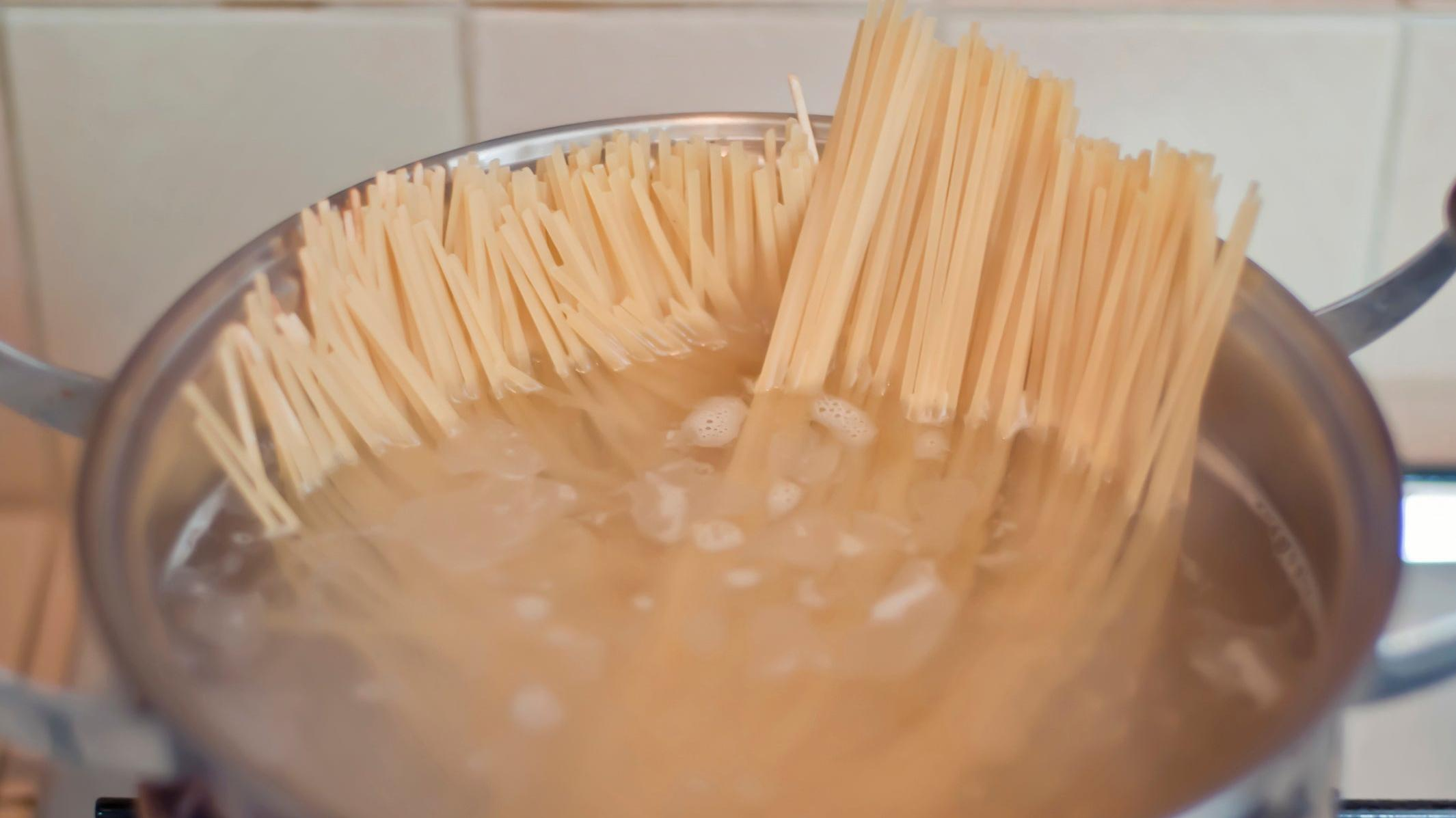How To Prevent Your Pot From Boiling Over While Cooking
Once again, elementary school science saves the day
Have you ever heard the old wives' tale about adding a splash of oil to your pasta water to keep the noodles from sticking together? Well, those old wives were wrong. It's true that when pasta hits boiling water, the starches on its many surfaces begin to turn into a sticky gel. (If your elementary school had the funding for an art program you may remember that mixing flour and water makes glue—same principle!) But as we learned in fifth-grade science class, oil is less dense than water, so any oil added to the pot won't help coat those noodles and keep them un-stuck from one another; instead, it'll just float to the top as the noodles boil below.
The only way to stop pasta from sticking in boiling water is by stirring it frequently, which gives those sticky starches a chance to set without gluing themselves to their noodle neighbors. But even though oil doesn't coat the noodles, there is a very good reason to add some to the pasta pot.
Whenever you're boiling pasta, potatoes, or any other super-starchy foods, add a few spoonfuls of oil to the water in the pot. The reason is yet another fun scientific principle that you learned about in fifth grade: surface tension. This is why you need to pay attention in school, kids!
In the event you haven't given science much thought since you graduated, allow me to give you a quick refresher: like all things, water is made of molecules (H2O), and those molecules find each other very attractive. Below the surface, these molecules are pulled equally in all directions. Up top, though, it's a different story: because there's no water molecules above them to exert force, surface molecules pull themselves tightly together to form a "skin" of sorts. (If you're having trouble visualizing this, here's a video.)
On its own, water's "skin" is not so strong that it can't be easily broken with a bit of pressure. But what happens if sticky starch molecules decide to join the party? You probably know the answer to this if you've ever left a big pot of pasta or potatoes to boil unattended: when the bubbles come to the water's surface, they don't burst and flitter away as steam. Instead, those air bubbles become encased in a thin film of water and starch molecules—a film which, as you might remember from the first paragraph, is essentially glue.
As the pot boils, these starch-coated bubbles don't pop—they begin stacking themselves one on top of each other into a foamy tower that eventually erupts out of the pot and spills out all over the stove, extinguishing the burner flame and making a colossal mess. You can prevent this from happening by lowering the heat, stirring regularly, and keeping a close eye on the pot. Or you can add a few tablespoons of oil to the water and let science do the job for you.
How? Recall that oil is less dense than water, which makes it float on top. Oil molecules are also hydrophobic, meaning that instead of being attracted to water molecules like starch is, oil repels them. And, finally, oil has lower surface tension than water. Add a few tablespoons of oil to a big pot of bubbling water, all those molecules up near the surface will be slipping and sliding all over each other, even when starch joins the party. No bubbles, no boil-overs, no mess.
As for what oil to use, any kind will work, but don't waste anything good like olive oil or butter; cheap cooking oils like vegetable or canola work best. You don't need to measure before adding; eyeball it straight from the bottle, estimating about a teaspoon of oil for every quart of water in the pot. And remember: even though you've protected yourself from the scourge of surface tension, that doesn't prevent any sticky shenanigans happening under the surface, so if you son't want your pasta to stick, remember to stir it a few times after dropping it in the pot.
